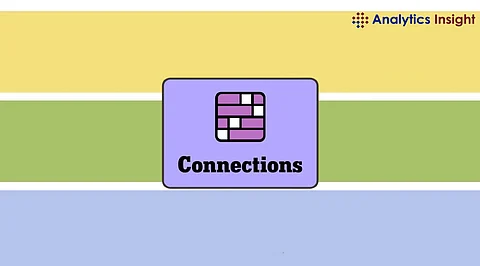

Connections is a word game published in the New York Times daily puzzle section. It was started during the pandemic as an addition to the plethora of games stationed by the New York Times like NYT Crossword and NYT Worle. Taking a step further from numerous puzzle games that test player’s verbal and field knowledge, NYT Connections requires players to relate terms to find the connections between each category.
Launched in January 2022, NYT Connections quickly gained momentum among word game enthusiasts. As of today, NYT Connections is the go-to favourite for anyone who loves playing word games. By August 2023, it ranked as the second most popular game on the New York Times Games, coming only behind Wordle. This rapid growth suggests that people are open to participating in intellectually stimulating yet fun daily word games.
Ready to play today’s game but need a little help? Keep reading to know the hints, categories and answers for November 07’s NYT Connections game.
Connections consist of a 16-word grid to be sorted into four groups: all words in one group should represent affinity to a common theme. All the categories are colour-coded based on difficulty. Yellow is the easiest, then green, blue, and the last purple, which is the most difficult. Once the player makes over four errors, the game ends. This structure encourages strategic thinking and a sharp mind for word associations.
Here's a hint for today's Connections categories
1. Yellow: Food prepared after tossing them together.
2. Green: perception of someone through senses.
3. Blue: Art or album information.
4. Purple: Mixed words related to the field of art.
Here are a few strategies to help the players play the game with ease and within a less-error time frame.
Identify Obvious Patterns: First, scan for words that are related. For instance, if the words listed are like "apple," "banana," "cherry," and "date," then they probably belong to a basic broad category of fruits.
Consider Multi-Meanings: Words can have more than one meaning. For instance, "bark" is a tree's outer layer or what a dog sounds like.
Be Alert to Homophones: Homophones are words that are pronounced alike but bring out different meanings. Paying attention to such words helps avoid misgrouping and ambiguity.
Use the Shuffle Option: Sometimes shuffling the words can give one a new insight into words with perhaps previously unnoticed relationships.
Need a little extra help? Today's connections fall into the following categories:
1. Yellow: Food-Related Jumbles
2. Green: Public Standing
3. Blue: Info on a Museum Placard
4. Purple: Anagrams of Famous Painters
Details of the November 7 puzzle will appear towards the end of this article. However, players should expect a mix of simple and complex relationships in today’s puzzle. Themes will run the gamut from commonplace expressions and homophones to more abstract themes, ensuring a diverse and engaging experience.
1. Food-Related Jumbles: HASH, SALAD, SCRAMBLE, STEW
2. Public Standing: CHARACTER, IMAGE, NAME, REPUTATION
3. Info on a Museum Placard: ARTIST, MEDIUM, TITLE, YEAR
4. Anagrams of Famous Painters: DIAL, EGADS, MONTE, YOGA
The NYT connections have made a space for a healthy online community to grow. Players who frequently play the game, connect on social media sites to comment and share their experiences and tactics of the game. Some, even give solutions without the gloating. This group-oriented character has also been among the reasons why people find the game attractive because people come together based on common problems and victories.
The New York Times' Connections remains to provide word game enthusiasts with a daily dose of mental stimulation. In that respect, it encapsulates the simplicity and complexity involved in their games, maintaining their strong positions at all skill levels. As of November 7, 2024, this game serves as a testament to the enduring allure of word puzzles during the digital age.
